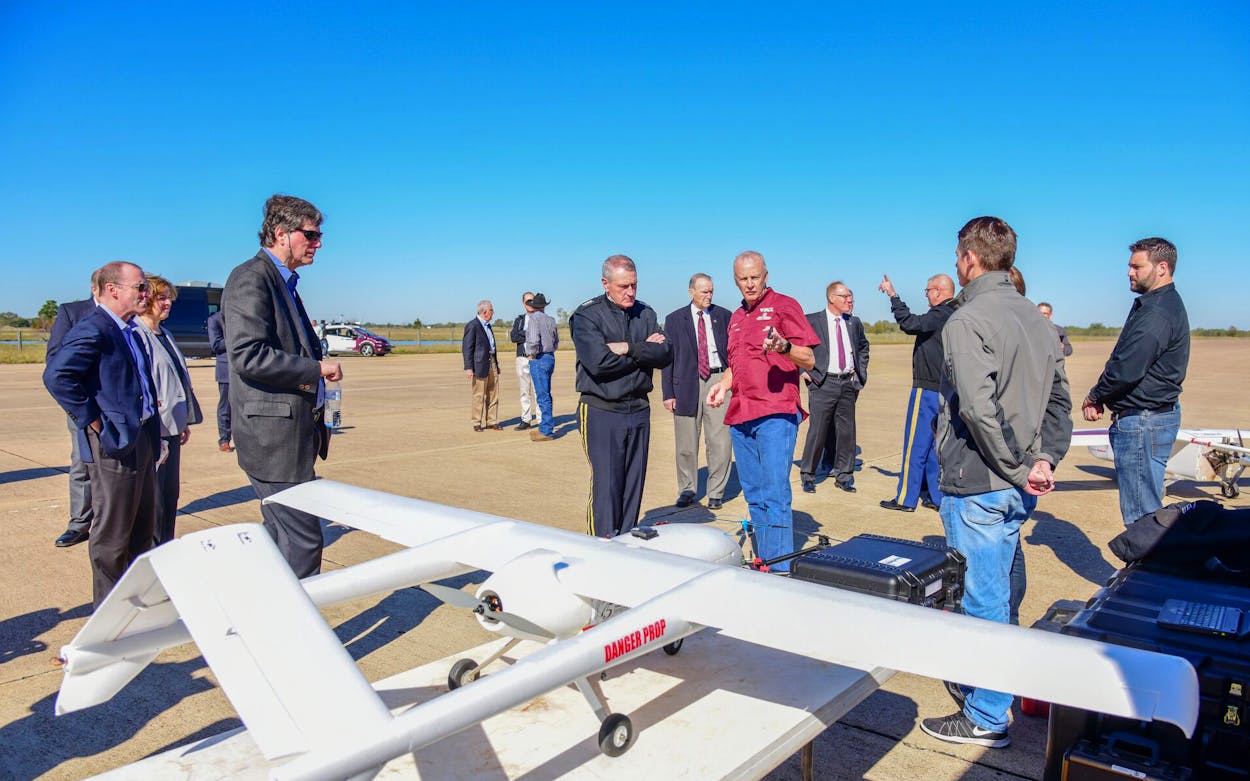Amazon may have snubbed Texas in its HQ2 search, but the state can console itself with the thought that another massive organization with virtually unlimited resources—the U.S. Army—decided earlier this year to establish a major outpost here. After considering 150 potential cities, the Army announced in July that its new Futures Command would be headquartered in the University of Texas System administration building in downtown Austin. As part of the largest reorganization of the Army since the Vietnam War, the Futures Command is charged with modernizing the Army through advanced research, product development, and weapons testing.
Recently, commanding General John M. Murray and his top staffers paid their first official visit to Texas A&M University in College Station, part of a nationwide tour of research universities that has also included Stanford and the University of California–Berkeley. “When I was a second lieutenant in the Army Reserve, four-star generals were like God—you heard about them, but you never saw them,” joked A&M Chancellor John Sharp in his introduction of Murray at a press conference. Sharp welcomed the Futures Command to campus by assuring them that “there is not a question you can ask us that the answer is not yes.”
That eagerness to be of assistance was on display over the next three days as A&M officials gave Murray a whirlwind tour of the College Station campus that included visits to the new, 500,000-square foot Zachry Engineering Education Complex, where he met students designing model rockets and autonomous vehicles; the Center for Infrastructure Renewal, where he was shown artificial intelligence research that could help drones identify targets; a vehicle testing facility that could be configured for tanks; and the National Aerothermochemistry and Hypersonics Laboratory, which the Air Force has already taken advantage of.
“If there is an area where the Futures Command would like us to invest, we can do that,” said Katherine Banks, the vice chancellor of engineering and national laboratories, during a Powerpoint presentation about A&M’s $905 million research portfolio. “We can structure people and programs around the needs you identify,” added Steve Cambone, associate vice chancellor for cybersecurity initiatives and a former undersecretary of defense for intelligence under President George W. Bush. “We will deliver outcomes.”
When it comes to love of acronyms, academia may be second only to the military itself. Over the course of his tour, Murray was bombarded with ADDIE models and MCPTT projects. On A&M’s RELLIS campus he was shown the TEES, TTI, TEEX, and CIR, which included the AIMM and NCMRL labs. “I don’t have a technical background,” Murray later confided. “I’ll be honest with you—about three-quarters of the stuff the students told me, I nodded but I didn’t really understand much of what they were saying. But I have a lot of exposure to young soldiers and their requirements. I’ve served with a lot of kids in close combat, so I understand that piece of it.”
Once the Austin headquarters is fully staffed, Murray will oversee about 500 people, many of them technical experts. Ultimately, the command will oversee over 17,000 soldiers and U.S. Army civilians nationwide. Murray’s role, he said, is to bridge the cultural divide between academia, industry, and the military so that ordinary soldiers like the ones he led in Iraq will have the equipment they need, whether it be virtual-reality training headsets, enhanced night vision goggles, or next-generation automatic rifles. Of the universities he’s visited, A&M “is really the first place where I can visualize something coming out of basic research into more of an R&D phase—just short of production.”
For Murray, who has spent his entire career in the military, the mission of the Futures Command is personal, the name literal. “I’ve had three daughters who married soldiers, so I feel like I owe something. The military is becoming a family business—I’m about to have eight grandchildren, and chances are one of them will be in the military. After 36 years of reaping the benefits of a military career, I do think I have the obligation to get this right.”
- More About:
- Military
- John Sharp
- College Station








